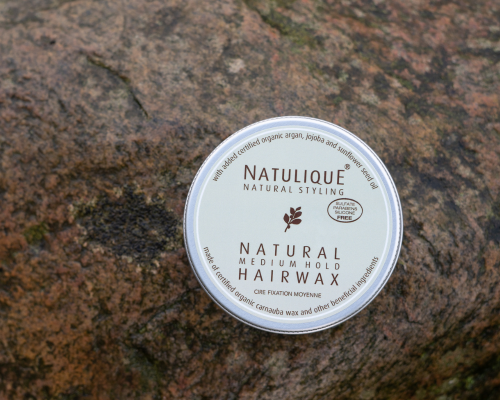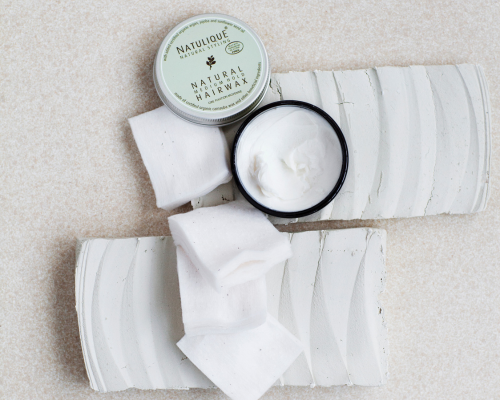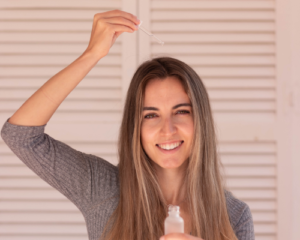Introduction to the Daily Use of Wax
Waxing is a common part of our personal care routine, whether for hair removal or styling. However, the question remains: can wax be used every day? The idea of daily application raises concerns about the potential effects on skin and hair. This article explores the different reasons for daily use, as well as the parameters to take into account to preserve the health of your skin and hair.
Why use wax
Wax, in its various forms, is a versatile product used by many. Understanding why and how it's used can shed some light on its suitability for everyday use.
Advantages of using wax
- Sustainable results : Waxing removes hair at the root, delaying regrowth longer than shaving.
- Simplicity and finish: Styling waxes provide solid hold and a neat texture, ideal for maintaining complex hair styles.
- Time saving : An established routine can save time in the long term by spacing out the frequency of necessary touch-ups.
The Limits of Daily Wax Use
- Potential Irritations : Excessive use can cause irritation, especially on sensitive skin.
- Product accumulation : In the case of styling waxes, build-up can weigh hair down and require more frequent washing.
- Regrowth time : Using wax too often can affect the hair's natural regrowth cycle, which could disrupt its natural regeneration.
Different types of wax
It's crucial to distinguish between the various types of wax available and their uses, as each has distinct properties and effects.
Depilatory Wax
- Heated : Allows gentler, more effective application to large areas of the body.
- Cold : Handy for small touch-ups, but less effective on thick hair.
- Natural : Often enriched with soothing ingredients to minimize post-waxing irritation.
Hair Wax
- Water-based : Easy to rinse off, it offers light hold with no greasy residue.
- Oil-based : Ideal for hairstyles requiring strong hold and long-lasting shine.
- Texturizing : Adds volume and structure, perfect for tousled or casual looks.
Effects of Daily Waxing on the Skin
The daily application of wax, while effective for some, can have various impacts on the skin. It's important to consider the potential consequences before deciding to incorporate it into a daily routine.
Effect of Wax on Pileated Follicles
Stimulates Cellular Rejuvenation
- Exfoliation : Waxing helps remove dead cells from the skin's surface, which can stimulate cell renewal and make skin smoother.
- Root stimulation: By pulling hairs out at the root, wax encourages the follicle to produce thinner and possibly less dense hair over time.
May cause skin irritation
- Increased sensitivity : Frequent use can make skin more sensitive and prone to redness.
- Risk of Ingrown Hair : Repeated follicle disruption can lead to irregular hair growth, increasing the risk of ingrown hairs.
- Allergic reactions : Some people may develop allergic reactions to wax components, so frequent application should be avoided.
Effect of Wax on Skin Moisture
Wax drying effect
- Dehydration: Constant use of wax can strip the skin of its natural oils, leaving it dry and less radiant.
- Loss of Flexibility: Skin dried out by frequent hair removal can lose its suppleness and become more prone to fine lines.
How to use After-Wax Moisturizer
- Restore hydration: Applying rich moisturizing creams after waxing helps restore skin hydration and soothe irritation.
- Please note the ingredients: We recommend using products containing soothing ingredients such as aloe vera or shea butter to optimize post-waxing hydration.
- Complementary Routine: Incorporating skincare creams adapted to your skin type can counterbalance the potential drying effect of wax.
Considering a routine that incorporates adequate hydration is essential to maintaining skin health and appearance. A balanced approach allows you to enjoy the benefits of waxing without compromising skin integrity.
“`
See also: Can I have my hair colored while I'm pregnant?
"`html
Influences of Daily Waxing on the Hair
The daily application of hair wax may seem an obvious choice for those seeking impeccable style. However, it's crucial to understand the potential effects on hair health before adopting this habit.
Effects of styling wax on hair health
Product accumulation potential
- Persistent residues : Frequent use can leave residues that ordinary shampoo cannot always eliminate completely.
- Capillary Pore Obstruction: Build-up on the scalp can clog pores, potentially leading to problems like acne or itching.
- Need for frequent washing : To avoid build-up, more frequent washing may be required, which can also rob hair of its essential natural oils.
Role in Texture and Gloss
- Weighted texture : Excess wax can weigh down strands, leaving hair dull and lacking in movement.
- Disruption of Natural Volume : Accumulation impacts volume, making it difficult to achieve voluminous or airy styles.
- Loss of Natural Gloss : Oil-based products can leave a greasy film that masks hair's natural shine.
Precautions to take with Hair Wax
Product selection
- Light formulas : Choose water-based waxes, which are easier to rinse off and less likely to cause heavy build-up.
- Hydration : Opt for products containing moisturizing ingredients to prevent hair dryness.
- Specific products : Choose a wax suited to your hair type to optimize its benefits and minimize side effects.
Hair Care Routine
- Moderate use : Limit the amount applied to what is necessary to achieve the desired look, to control build-up.
- Deep Cleaning : Incorporate clarifying shampoos into your routine to completely eliminate wax residues.
- Deep Treatments : Incorporate nourishing treatments, such as hair masks, to revitalize hair after regular wax applications.
In short, while styling wax offers undeniable advantages for shaping and maintaining elegant hairstyles, careful and moderate use remains paramount. The addition of suitable care products ensures that hair retains its vitality and shine despite regular use of styling waxes.
“`
Tips for Healthy Daily Use of Wax
The daily use of wax, whether for hair removal or styling, requires certain precautions to avoid undesirable effects. By following a few practical tips, you can maximize the benefits of waxing while minimizing its potential negative impacts on your skin and hair.
Choosing the right product
Recommended Natural Ingredients
- Salt- and sulfate-free products : These ingredients are often responsible for excessive dryness and irritation. Opt for natural, gentle formulas.
- Hypoallergenic : Choose waxes that have been dermatologically tested and contain few chemical additives to avoid allergic reactions.
- Rich in Moisturizing Agents : Including elements such as aloe vera or argan oil in your choice of wax can provide much-needed hydration.
Establishing a proper routine
Adjust Frequency
- Spacing : Even if daily use is envisaged, giving skin and hair a periodic break can be beneficial.
- Observation of reactions : Always be alert to signs of sensitivity or irritation, and adjust frequency accordingly.
Integration of Complementary Care
- Daily moisturizing : After waxing, always apply a moisturizer or serum to soothe the skin.
- Proteins for Hair : Regular application of protein masks can strengthen strands affected by frequent use of styling products.
FAQ on Wax Usage
Can wax damage the skin?
Frequent use of wax can cause irritation or redness, especially on sensitive skin. It's important to follow a balanced routine, and to moisturize your skin properly after each use.
What are the signs of a bad wax reaction?
Signs of a bad reaction include persistent redness, itching, burning or the appearance of a rash. If any of these symptoms occur, discontinue use and consult a dermatologist.
Can the wax be used on all hair types?
Yes, but it's essential to choose the right wax for your hair type. For example, heavy waxes are better suited to thick hair, while light waxes are preferred for fine hair.
Can wax cause ingrown hairs?
Yes, frequent waxing can disrupt hair regeneration and lead to ingrown hairs. Regular skin exfoliation can help reduce this risk.
How to minimize the drying effects of wax?
Use moisturizing products daily after applying wax. Opt for formulations rich in natural emollients to keep skin and hair well nourished.
Adopting a cautious, measured approach to daily waxing can help preserve your skin and hair while benefiting from its aesthetic capabilities. By understanding the pot.





